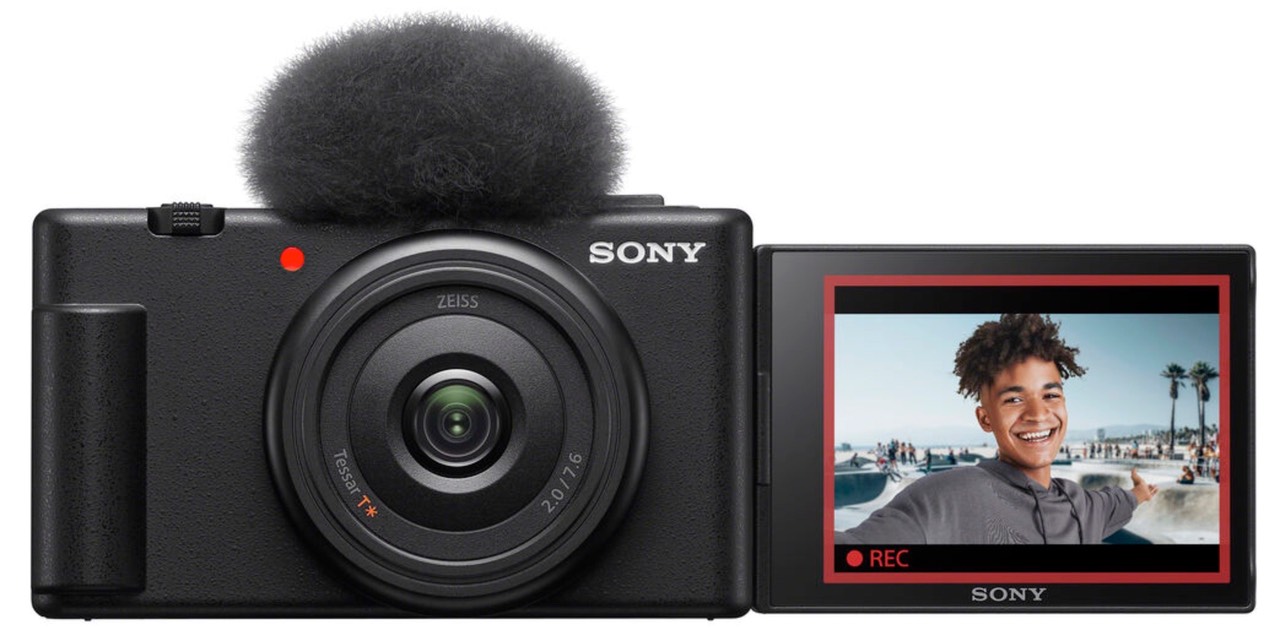Sony today dipped their toes deeper into the vlogosphere, announcing a new variant of the ZV-1, the ZV-1F.

Similar to the ZV-1, which in turn was similar to the last RX100 model, what we have is Sony recycling bits and pieces in a new form. Instead of a zoom lens, this time we get a fixed Zeiss-designed 20mm equivalent f/2 lens. With the older ZV-1 and its 24-70mm equivalent f/1.8-2.8 lens, holding the camera in vlogging mode meant that you could get a head-and-shoulders view with your—well, actually my—arm fully extended. The extra width and the non-protruding lens will be useful.
Most of the specifications beyond the lens are the same as the ZV-1. We get some improvements and simplifications in the ZV-1F, though. One now mandated improvement—Europe trying to exert their will over Silicon Valley—is the standard USB-C connector. We also have the newer Sony menu system and the ability to use 40.5mm filters. On the simplification side, we lose the ability to take stills in raw, there's no built-in ND filtration, we lose the hot shoe, and the weight drops 3 ounces (87g). We also lose phase detect autofocus, which in the samples I've seen so far—even Sony's launch video—will definitely show up at some point as an issue in keeping focus without getting the infamous CD wobble. Price is US$499.
We've now seen Sony dip into video with their stills cameras multiple times (ZV-1, ZV-1F, ZV-10, A7C to name the most recent), take the video side of cameras and build a dedicated camera (FX3 and FX30), and to continually push video features in the remaining still models (the upcoming A7R Mark V will get some video boosts). On the one hand, this is highly logical. I've been a proponent of the camera companies consolidating their efforts around a single lens mount (hey Panasonic, I'm still looking at you).
The problem is that the stills side of cameras is basically in a full stall. The last minor RX update was in the middle of 2019, and it was truly minor. Sony has yet to add features such as focus stacking to their A7 line. I could probably come up with a long list just for Sony Imaging, but it's not just Sony that is stalling. Most of the still camera prototypes and development plans I'm privy to are in what I'd call low-key iteration. Even something like picking a sensor with more megapixels or speed is a relatively low-key iteration the way its been headed. True innovation in still photography is for the most part missing in action.
I know I'll get hammered with people who say "what about the A1/Z9, what about the X-H2 twins, what about the R7?" Sure, a few models have instituted some larger changes in performance at the top of lines. The more cynical fingers hovering over my keyboard want to type "took too long to arrive." Many of the things we're seeing this year were possible far earlier. I'm sure the camera companies will blame the pandemic and parts shortages, but I'm not sure that's just pointing to the band-aid on the real problem. Just boosting performance in some way (resolution, frame rate) is not really adding anything to the still photography repertoire.
That problem is that, for the most part, the camera companies aren't excited about the future of still photography. It shows, day after day, launch after launch.
If that's all there is my friends, then let's keep dancing
Let's break out the booze and have a ball
If that's all there is
